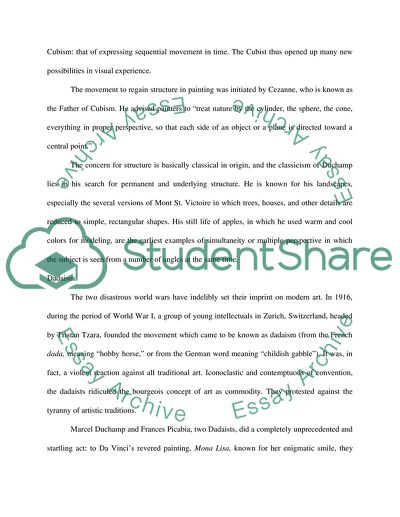Cite this document
(“Marcel Duchamp - Modern Painting Essay Example | Topics and Well Written Essays - 2000 words”, n.d.)
Retrieved from https://studentshare.org/visual-arts-film-studies/1546156-marcel-duchamp-modern-painting
Retrieved from https://studentshare.org/visual-arts-film-studies/1546156-marcel-duchamp-modern-painting
(Marcel Duchamp - Modern Painting Essay Example | Topics and Well Written Essays - 2000 Words)
https://studentshare.org/visual-arts-film-studies/1546156-marcel-duchamp-modern-painting.
https://studentshare.org/visual-arts-film-studies/1546156-marcel-duchamp-modern-painting.
“Marcel Duchamp - Modern Painting Essay Example | Topics and Well Written Essays - 2000 Words”, n.d. https://studentshare.org/visual-arts-film-studies/1546156-marcel-duchamp-modern-painting.


